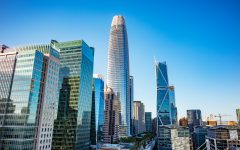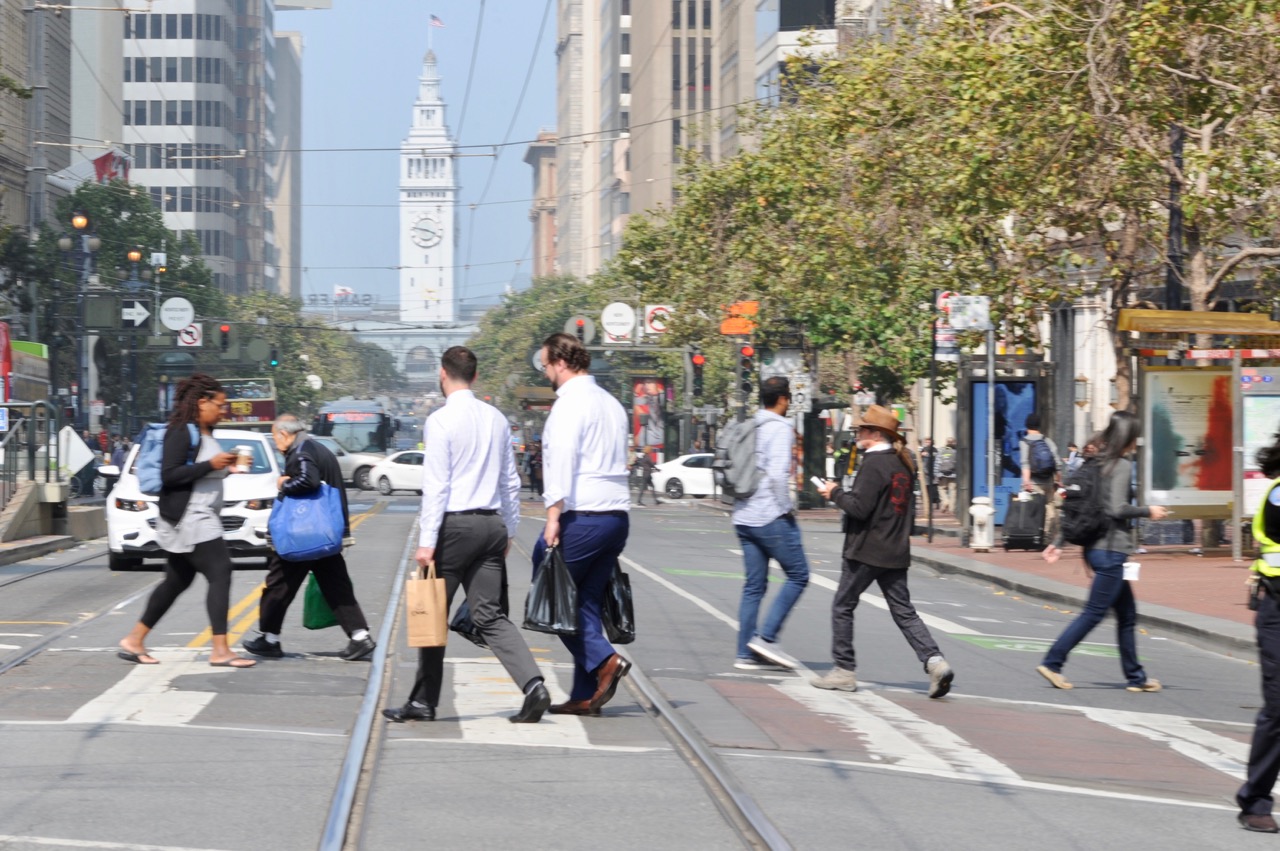
Alamo Square, by the Painted Ladies, San Francisco, CA, Feb., 2015. (Photo: Hayk_Shalunts/Shutterstock)
San Francisco Vacancy Rates Hit 27% In 2022
Vacancies jump up from 19% reported in 2021
By Evan Symon, December 30, 2022 5:21 pm
Vacancy rates in San Francisco hit an average of 27% in 2022 according to the CBRE real estate firm this week, jumping up from 19% in 2021 and 4% in 2022, becoming the highest vacancy rate the city has seen since the early 1990s.
Throughout the year, San Francisco has struggled to entice companies to bring employees back to downtown offices amid a growing desire to work from home and reduced costs for companies to do so, while at the same time dozens of tech companies have been reduced by tens of thousands of employees across the Bay Area, lowering office demand even further. Full-time office occupancy itself has remained under 40% for much of the year, with multiple enticements by the city failing to raise that mark.
In particular, the end of indoor masking in March had the city expecting a return of companies coming back downtown, much like they did with other Californian cities like Los Angeles and San Diego. But the enticements fell short, with many companies opting to either stay partially or totally remote due to the city refusing to budge on tax rates and other factors. As a result, San Francisco ended up giving $40 million to keep small businesses alive in the city center, with others nearby relying either on local residents or tourists to keep them alive.
The exodus of tech companies and tech company office space in the last few months of 2022 has put the city in an even dire situation. While the city hopes that a rebound may occur later in 2023, with companies cementing post-pandemic work practices, others are not so optimistic. The city is expected to have a $728 million budget gap in large part to the lack of filled offices next year, with further declines expected as a result. Solutions such as converting the open space to affordable housing and other needed uses has been floated, but local lawmakers have said that a lack of state support has made that solution unlikely.
“It’s going to require that we make some major changes that I know our legislative body is not going to be open to,” said San Francisco Mayor London Breed this week. “But if they don’t, what’s going to happen? State support for affordable housing is going to be taken away. Tax credits and all the things that we enjoy to support the ability for us to build housing in the first place in San Francisco is going to be taken away.
“We are facing an over $700 million budget deficit, mostly as a result to the challenges around our empty office spaces, as well as we’re seeing businesses closed in the financial district.”
Experts hope that this will turn around next year, but cautioned that a turnaround depends on what companies choose to do next year in regards to office space and staying in San Francisco.
A 27% vacancy rate in 2022
“It’s been pretty slow for the past three months,” added CBRE executive director Colin Yasukochi. “And given the unsettled state of the American economy, that won’t change anytime soon.
“The issue started with the pandemic. Prior to the pandemic, in the city of San Francisco, our office vacancy rate was about 4%. Which meant that 4% of all the space, the millions and millions of square feet of space that we had in the city, were vacant. Today, that number is more like 26%. It’s hard to predict anything based on whatever is happening today. It still isn’t clear to what extent companies will require employees to return to work, or what a “new normal” might be. Even so, things could start picking up in the second half of next year.
“The rents that you can get for a life sciences lab space are much higher than office space. So it makes that conversion financially viable. We have high demand for residential still, but not at the price that would be required for a developer to be able to do that from a financial perspective.”
But converting office space may not be enough.
“The city needs to focus on keeping companies in the city, and that means lowering taxes,” Michelle Duggan, a building occupancy researcher, explained to the Globe on Friday. “But the city is refusing to listen to common sense and is looking at band-aid solutions instead. They could get away with squeezing companies during the tech boom of the 2010s, but now, post boom and post recession, they just aren’t listening to reason and think that they’ll come back any day. Rust belt cities kept thinking industry would come back too. Detroit keeps thinking the auto industry will come back. Seattle keeps thinking that Boeing will return. San Francisco cannot go down that road, but it looks like they are.”
“More still, people love working from home. They still can’t wrap their heads around why people like being with pets and kids and not having to commute.”
Final 2022 vacancy figures in San Francisco from other firms are expected soon.
- Bill to Require Law Enforcement Disclosure if AI Was Used To Help Write Reports - August 7, 2025
- Gov. Newsom Files FOIA Request To ‘Expose True Cost’ Of L.A. Federal Troop Deployment for Anti-ICE Riots - August 6, 2025
- California Redistricting: How Newsom’s Plan Will Demolish Hard Fought GOP Gains - August 6, 2025





Dear London Breed and City Supervisors.
If you do not address the most glaring issue which are the dirty, drug infested and sh*t stained streets.
Who in their right mind wants to live and work in a city that has no regard for the average citizen who live decent lives and pay the taxes that you are yearning for?
Until the city is returned to law and order, people will keep moving out!
Your deficit will continue to grow and grow and the crime and trash will grow with it.
I wonder what the loss of tourist dollars are as well.
I will never again step foot in that city that I once loved!
No surprise to me. This is the direct result of incompetent and corrupt political leadership. San Francisco is just another doomed democrat shit hole. I could not tolerate the filth 10 years ago when the cable cars smelled of urine. What civilized person would consider exposing themselves (especially children) to utter pandemonium.
SF working overtime blaming anyone and everyone for businesses not returning. Missed one, though: Dear SF, here’s a mirror; learn to use it.
The collapse of SF is entirely due to San Francisco Mayor London Breed and the Democrats who installed her. It was once a vibrant and exciting city. It’s sad to see it become a depressing and crime filled hellhole under the current Democrat leadership and their failed policies.
Did you mean 4% in 2020?
Your numbers just don’t add up, maybe public schools there don’t teach arithmetic.
“Full-time office occupancy itself has remained under 40% for much of the year” That says the vacancy rate is north of 60% for much of the year which is at odds with; ” Prior to the pandemic, in the city of San Francisco, our office vacancy rate was about 4%. Which meant that 4% of all the space, the millions and millions of square feet of space that we had in the city, were vacant. Today, that number is more like 26%.”
So, 60%+ or 26%? Really, that difference is huge.